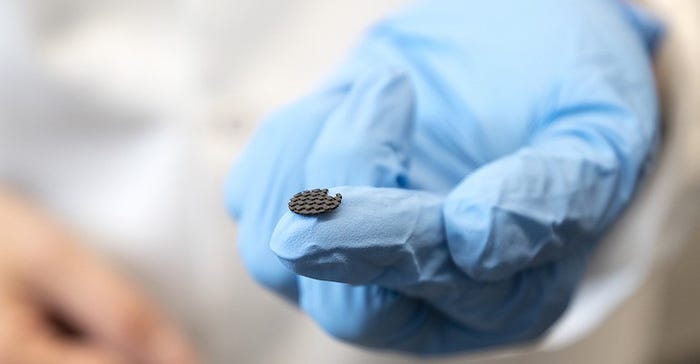The answer is yes, and possibly Mars as well: Work by NASA, The University of Texas at El Paso and partners has begun.

3D Printing of batteries is not a completely new concept: Battery Technology has been tracking the progress of Sakuu, a major proponent of the process in their development of their Kavian platform—the world’s first at-scale 3D printing platform capable of rapidly printing safe, ultra-high energy density solid-state batteries in custom shapes and sizes.
But Sakuu may soon find it has competition of sorts from a surprising location: Earth’s Moon. And while there is a well-detailed history of battery use in space, for satellites and spacecraft, those batteries weren’t made up there.
That changes now: NASA is leading a project to leverage 3D-printing processes with the aim of manufacturing rechargeable batteries using lunar and Martian regolith, which is the top layer of materials that covers the surface of the moon and Mars. That’s according to The University of Texas at El Paso (UTEP), which recently announced that it has joined the project.
UTEP’s $615,000 grant is part of a $2.5 million project that includes Youngstown State University (YSU), 3D printer manufacturer Formlabs, as well as ICON, the private sector company currently leading the NASA Mars Dune Alpha project aiming to 3D print future habitats on Mars.
3D printing batteries on the Moon and Mars: How and why
The long-term goal of the project is to maximize the sustainability of astronauts' future lunar and Martian missions by reducing payload weight and dead volume. The utilization of local resources widely available on the moon or Mars is crucial to develop infrastructure such as habitation modules, power generation and energy storage facilities.
While commercial lithium-ion batteries can be found in most of today’s applications, manufacturing lithium-ion batteries from lunar and Martian soil is not a viable option since lithium is scarcely available on the moon. For this project, the UTEP research team is currently focusing their work on sodium-ion battery chemistry, based on the greater abundance of sodium.
ACS Energy Letters, a peer-reviewed journal from the American Chemical Society, published an article titled “What Would Battery Manufacturing on the Moon and Mars Look Like?” in January, detailing the progress UTEP and NASA researchers have already made on this project.
The published work highlights two types of 3D-printing processes—material extrusion (ME) and vat photopolymerization (VPP)—able to produce shape-conformable batteries on the moon and Mars.

Shape-conformable batteries are complex 3D battery designs that outperform existing commercial batteries because of their ability to fill the dimensions of objects. Such tailored batteries are especially well-suited for applications in small spacecraft, portable power devices, robots, and large-scale power systems for moon and Mars habitat missions.
Shape-conformable batteries are complex 3D battery designs that outperform existing commercial batteries because of their ability to fill the dimensions of objects. Such tailored batteries are especially well-suited for applications in small spacecraft, portable power devices, robots, and large-scale power systems for moon and Mars habitat missions.
“This project with NASA is an opportunity to demonstrate UTEP’s expertise in both energy storage and 3D printing,” said Alexis Maurel, Ph.D., French Fulbright Scholar in the UTEP Department of Aerospace and Mechanical Engineering. “Additive manufacturing appears as a unique approach to manufacture shape-conformable batteries to support human operations in space and on the surface of the moon or Mars, where cargo resupply is not as readily available.”
Down-to-Earth benefits
Another potential outcome of this work is the development of shape-conformable batteries that can be used on Earth. These batteries could be embedded in 3D-printed concrete walls and connected to solar power generation to create compact, self-sustaining homes for disaster response and in developing countries.
In the project’s initial phase, NASA, UTEP and YSU will identify and work on the extraction of battery materials and precursors from lunar and Martian regolith. The UTEP/YSU team has already developed and VPP 3D printed composite resin feedstocks for each part of the sodium-ion battery (i.e., electrodes, electrolyte, current collector). The team at NASA Marshall Space Flight Center and Ames Research Center developed and ME 3D printed composite inks for the different battery components. UTEP and NASA’s Glenn Research Center are then electrochemically testing the completed 3D-printed sodium-ion battery components.
About the Author(s)
You May Also Like





